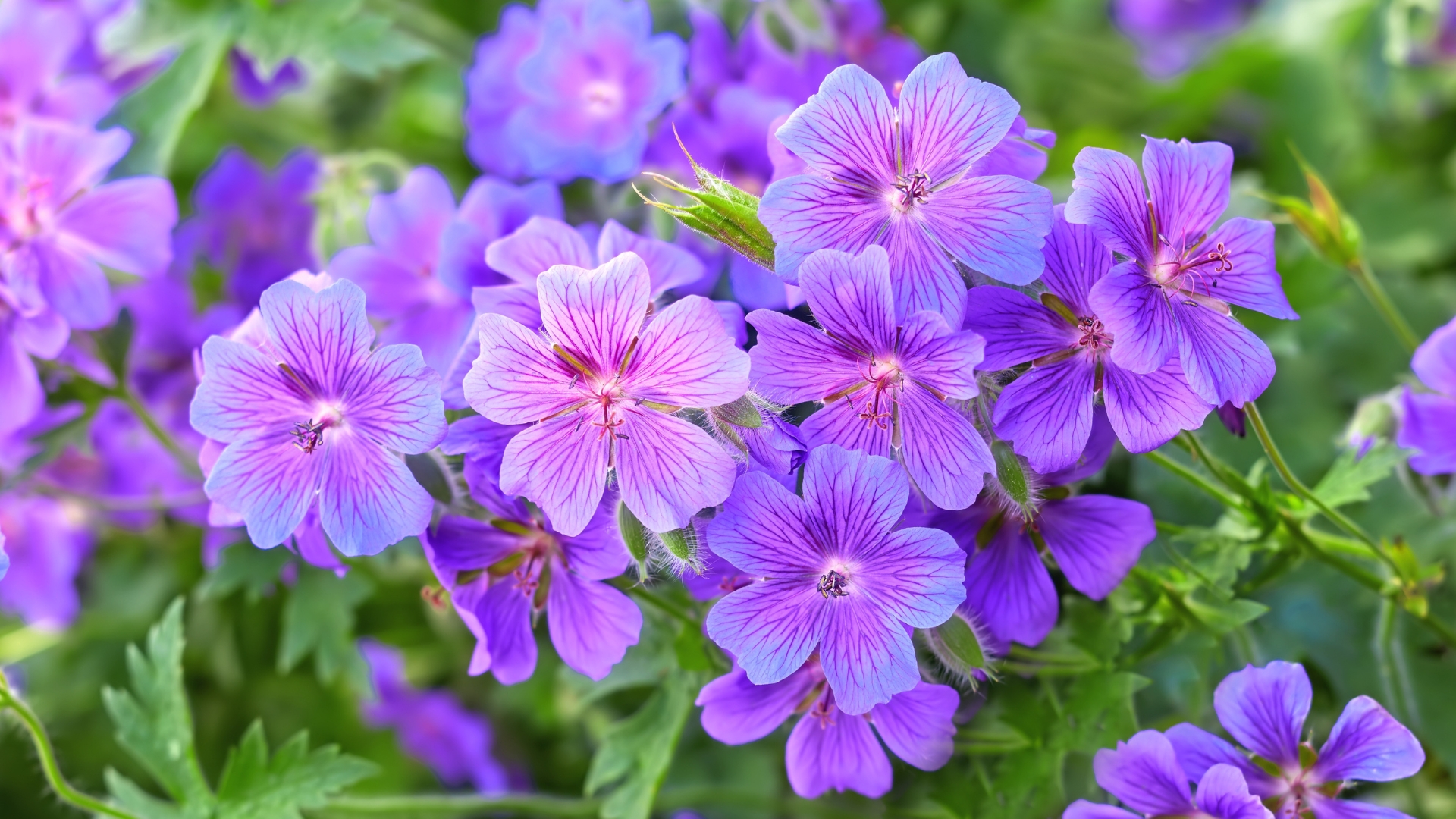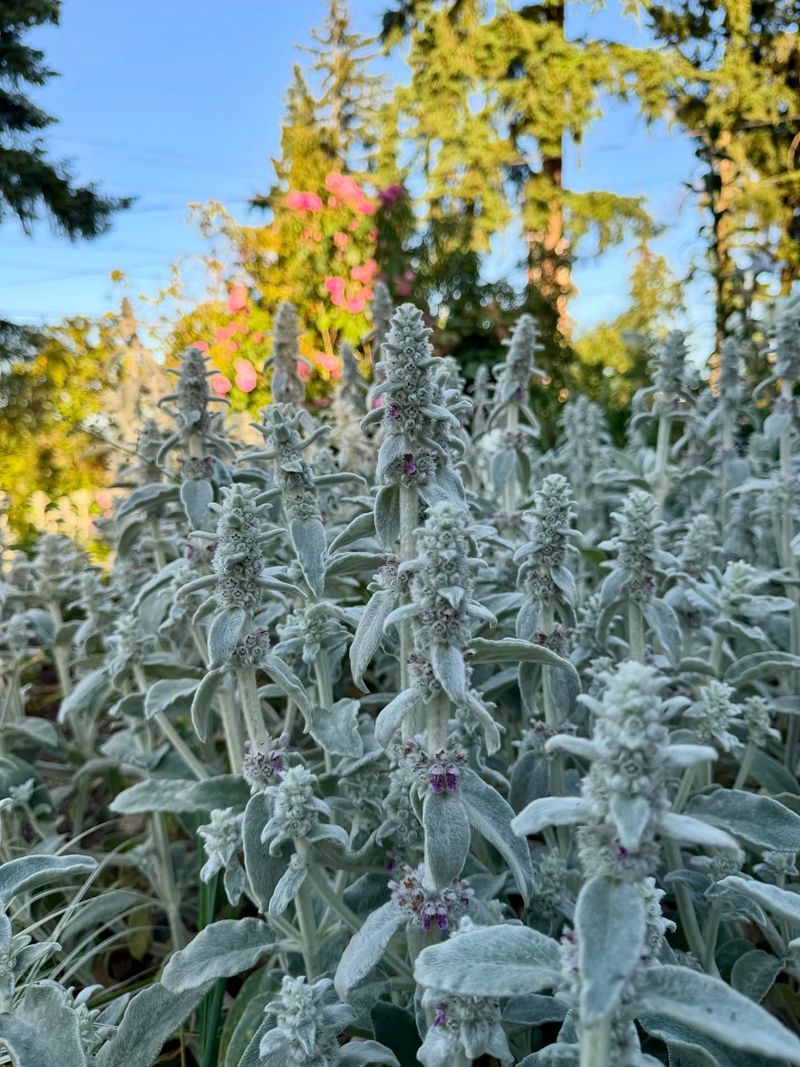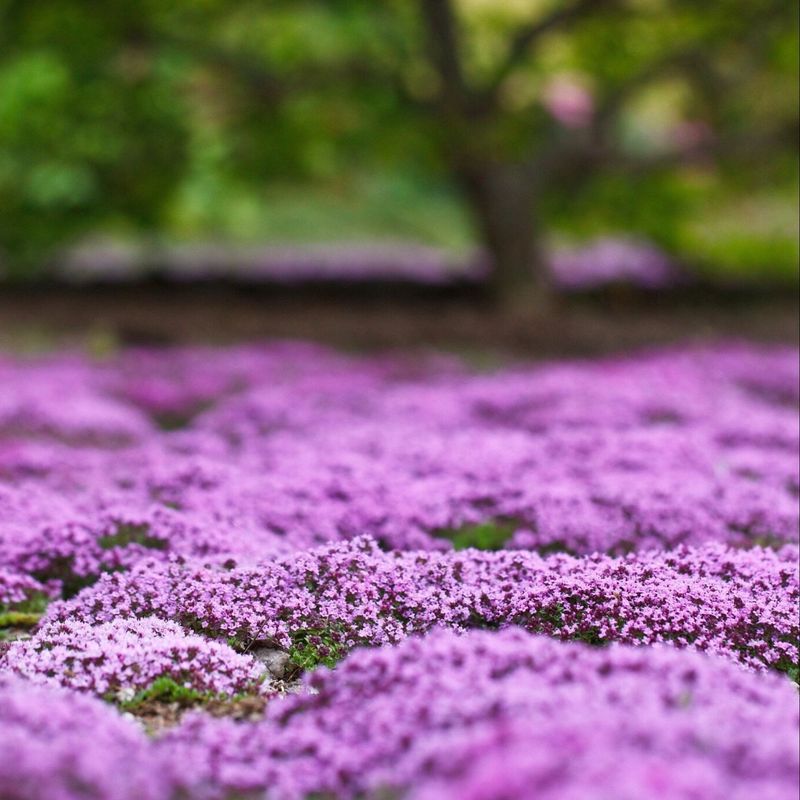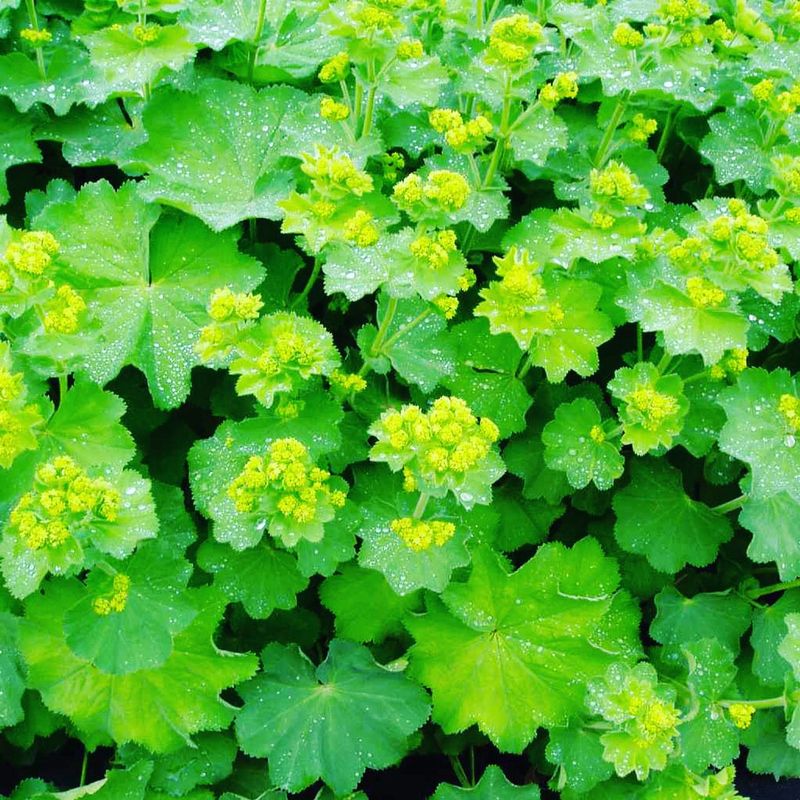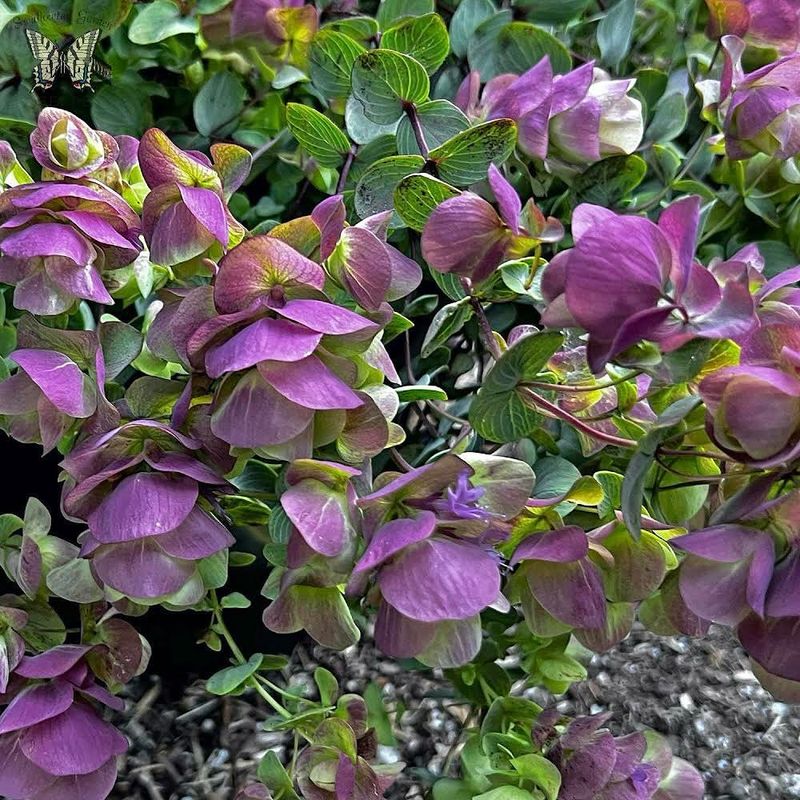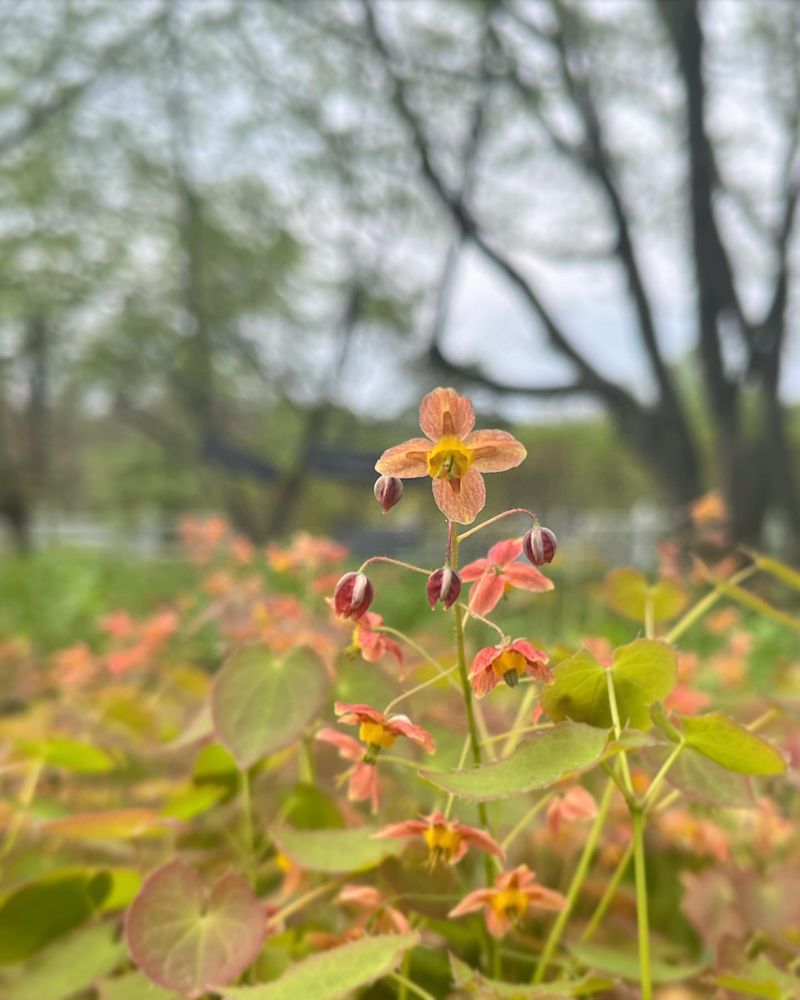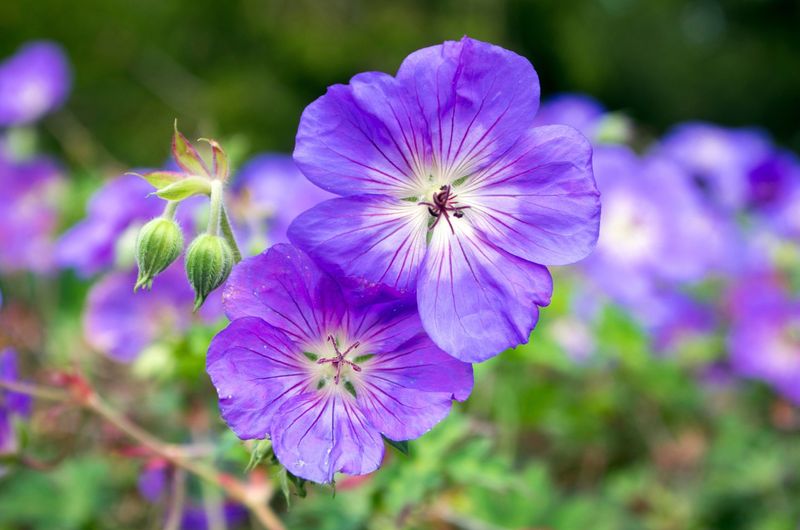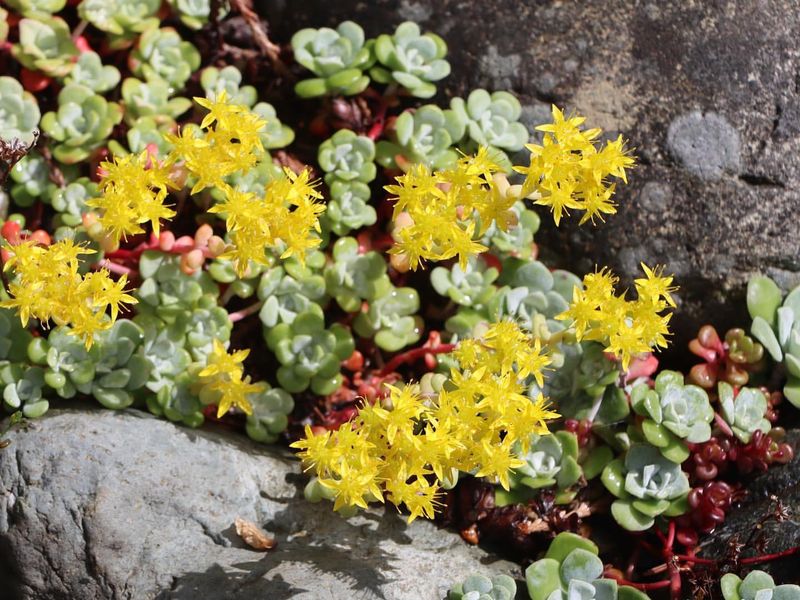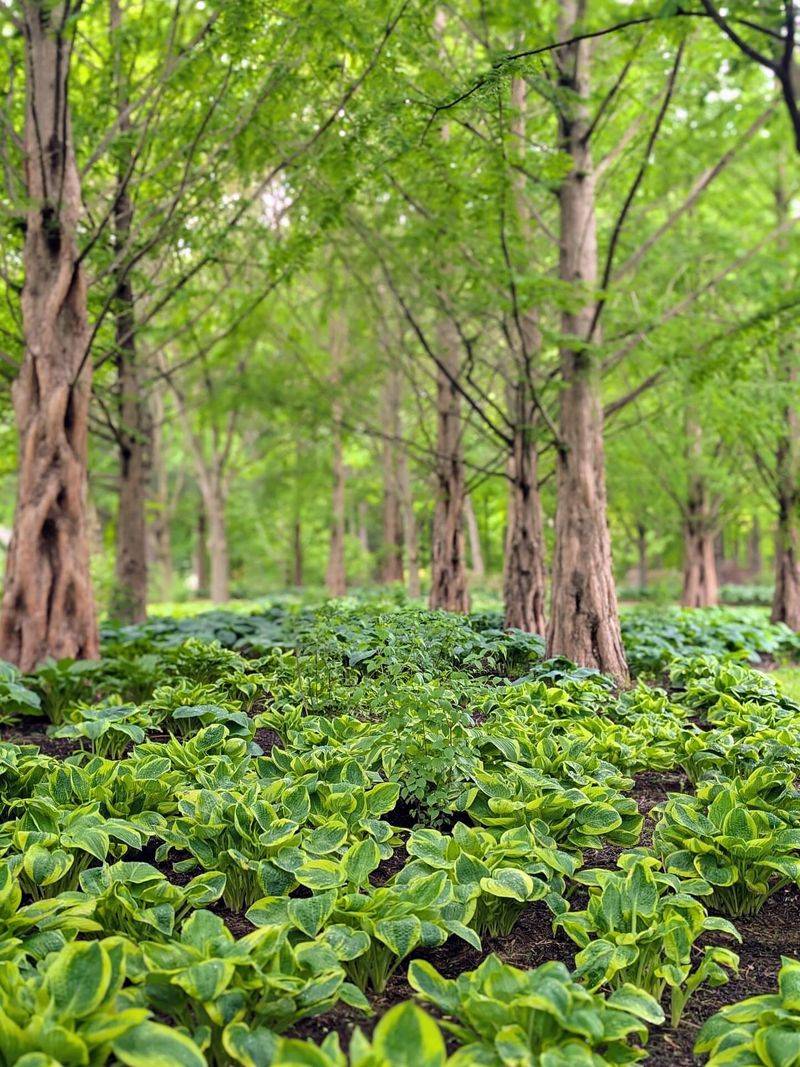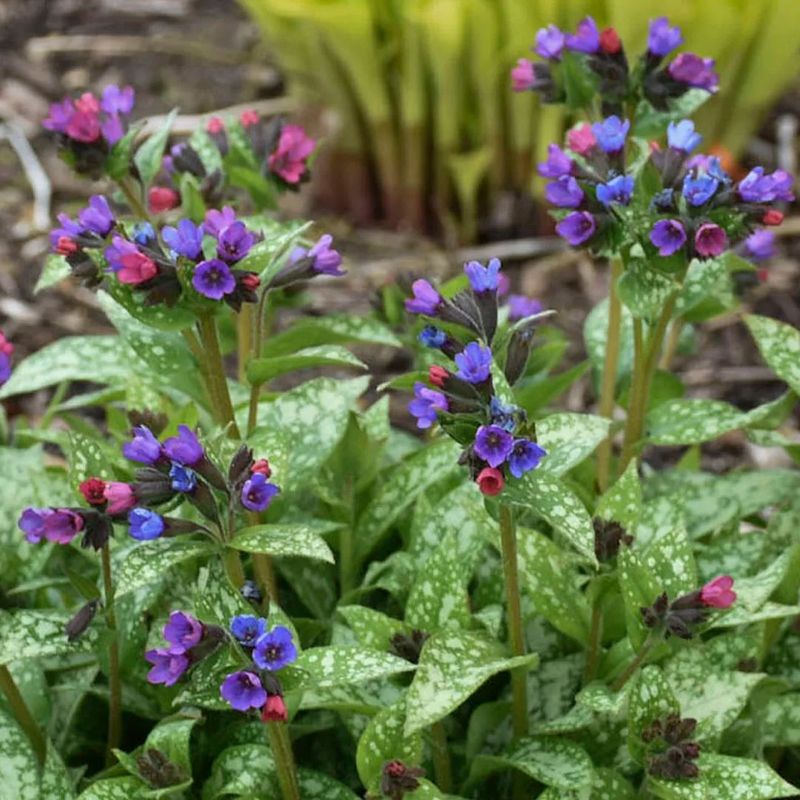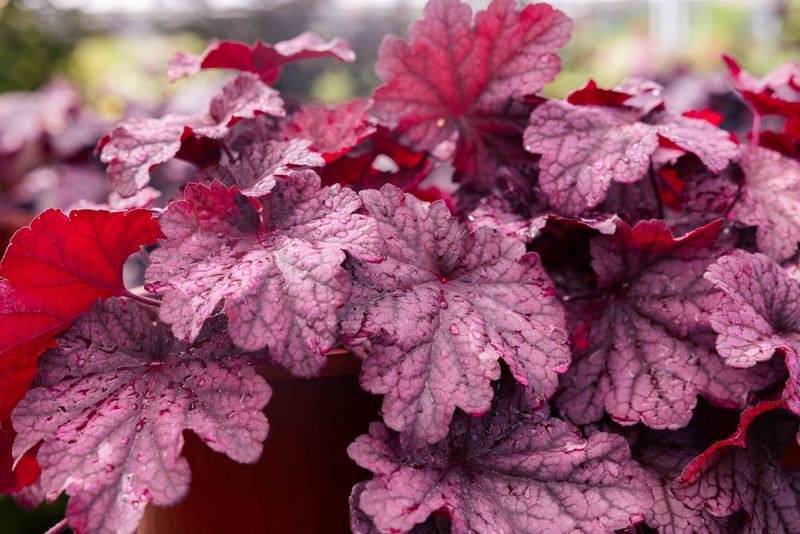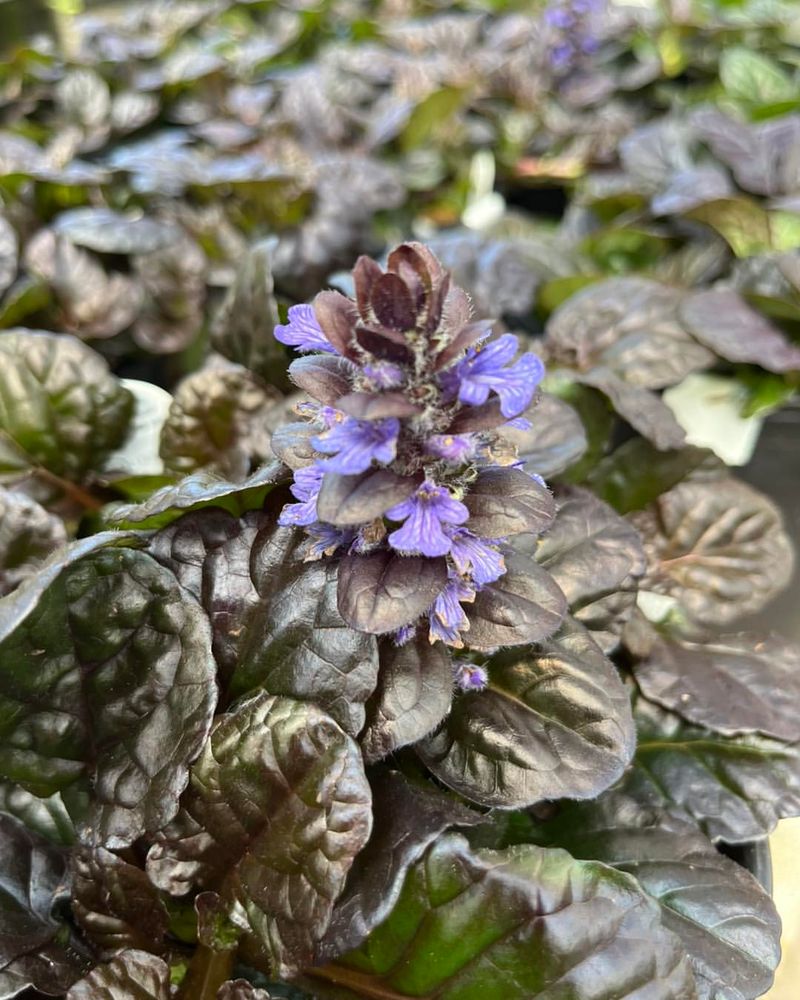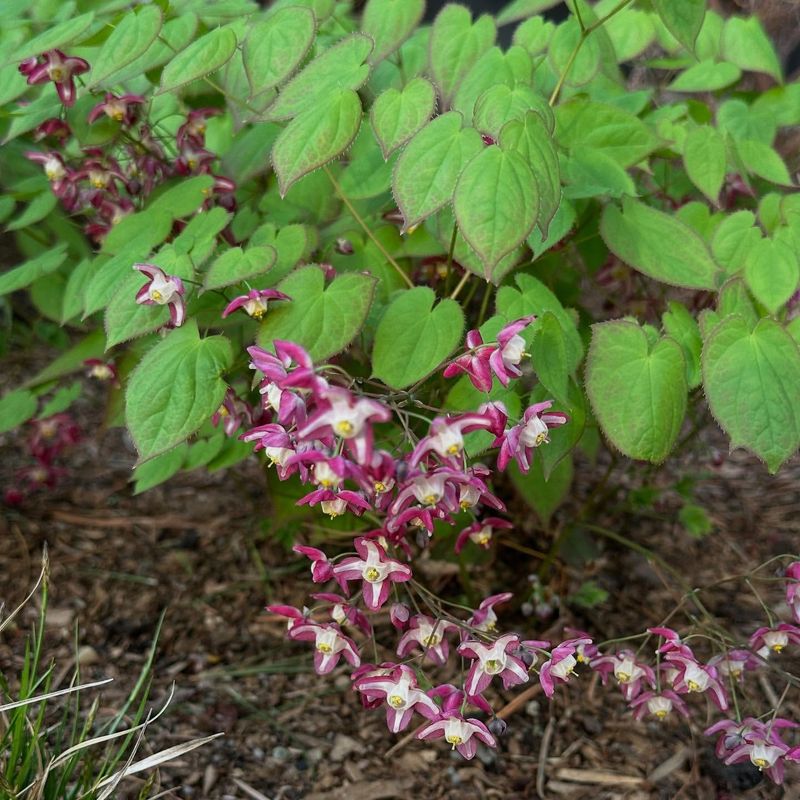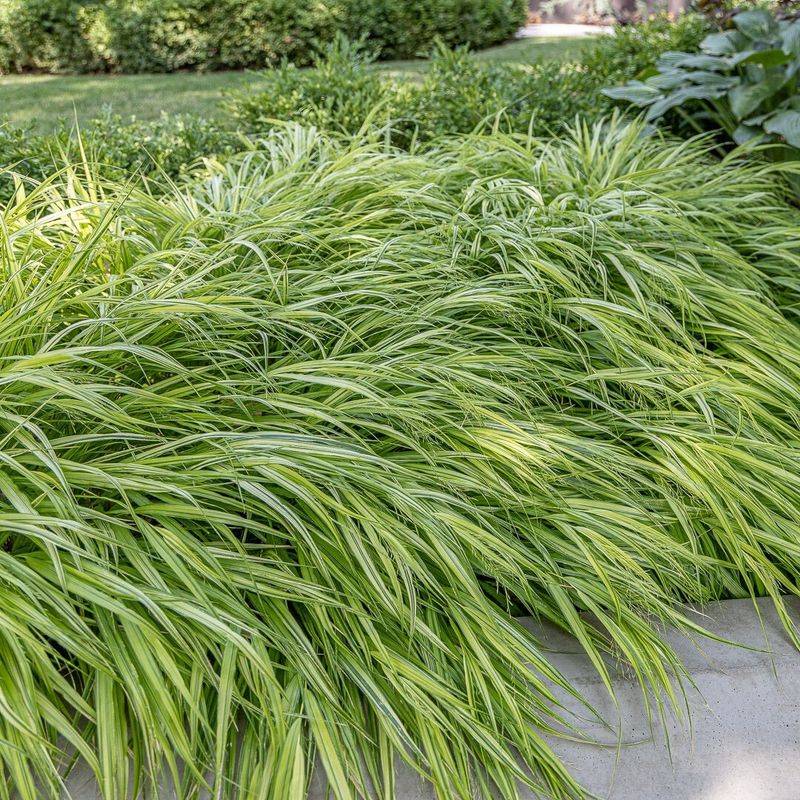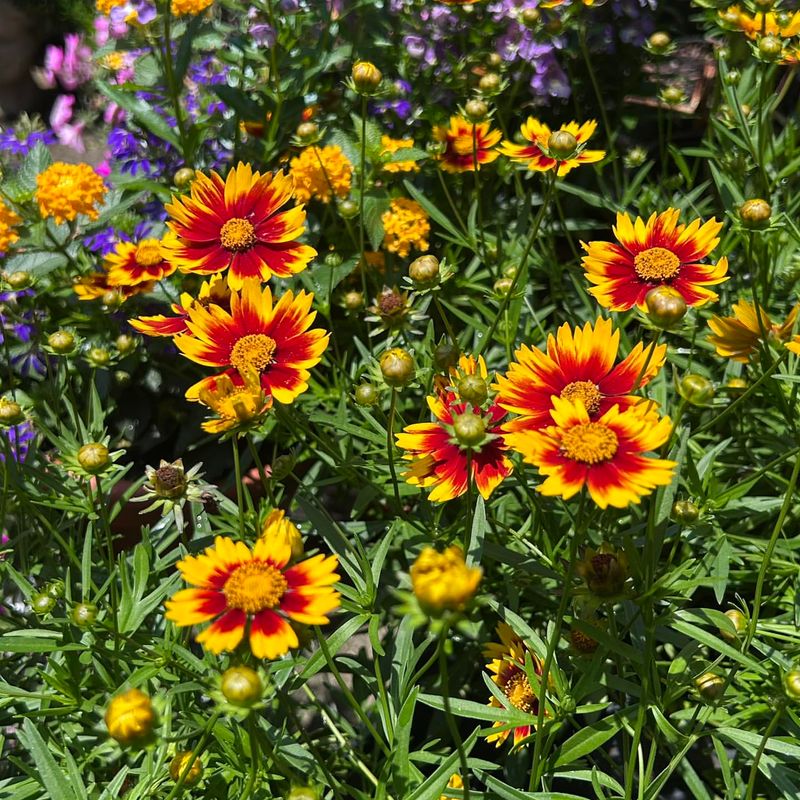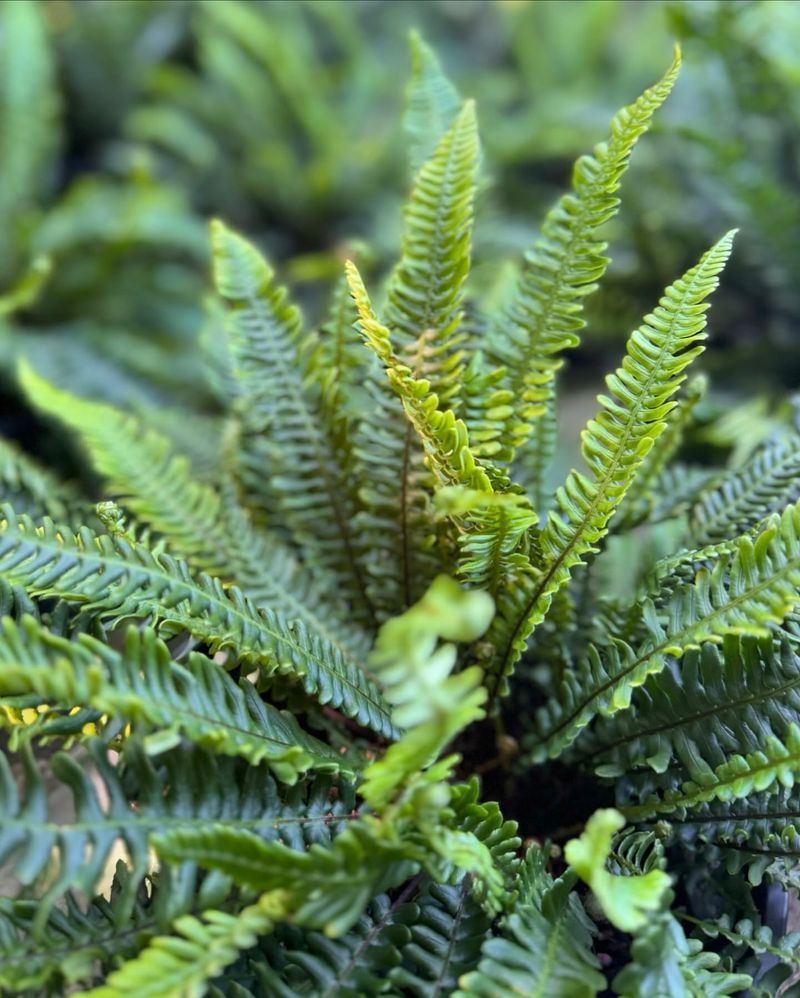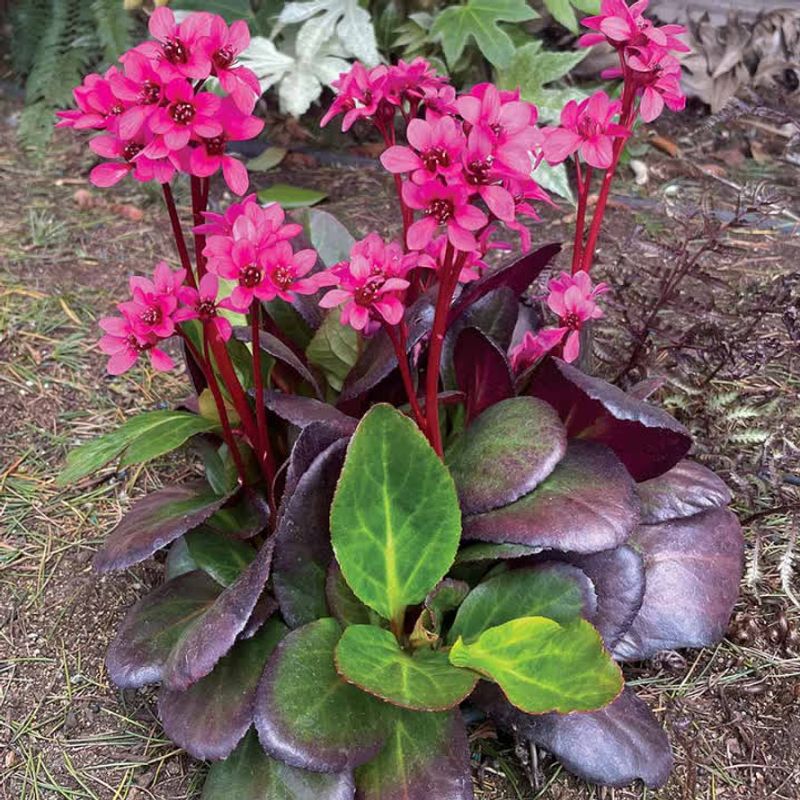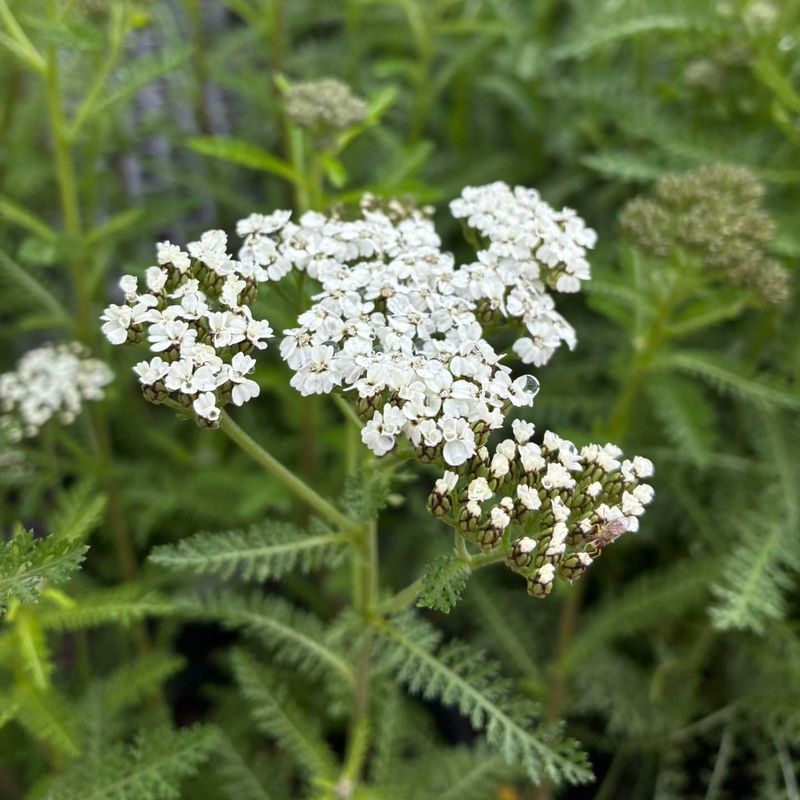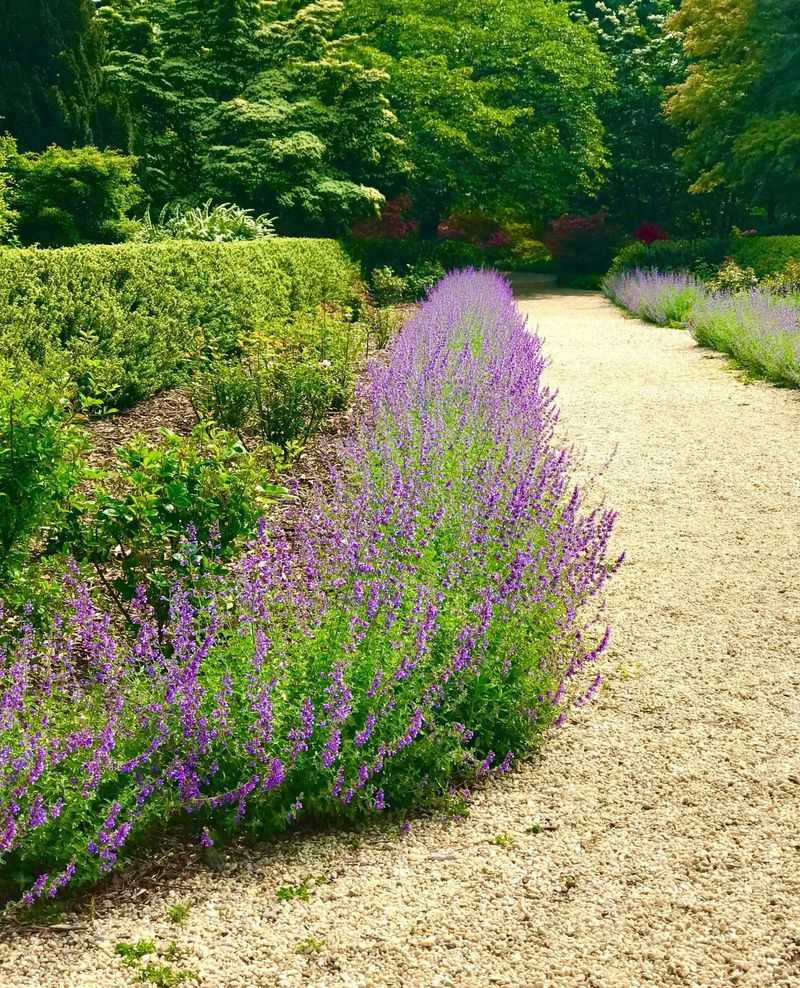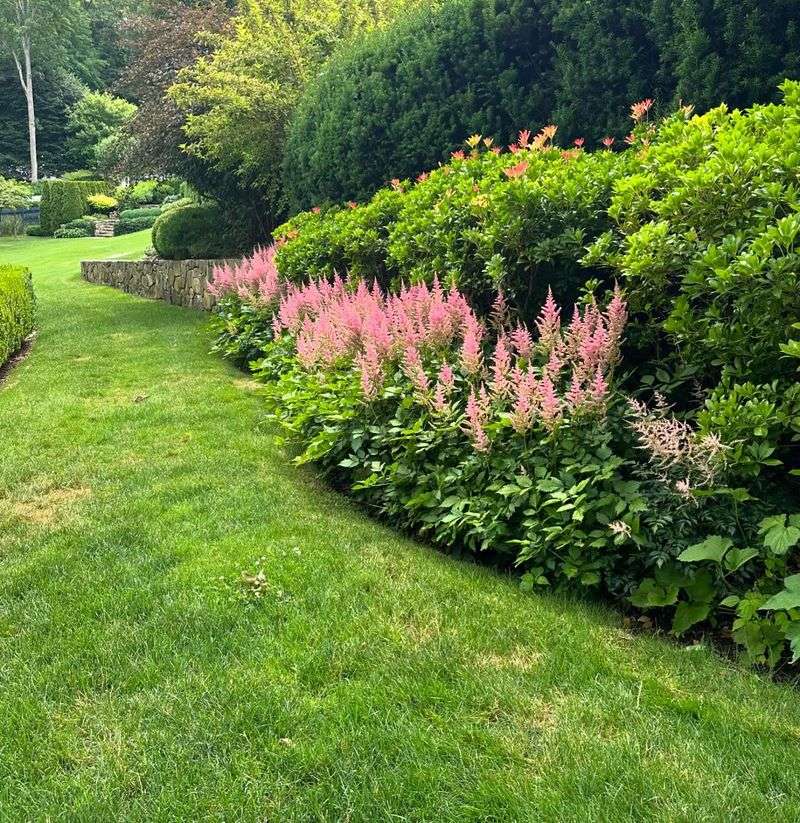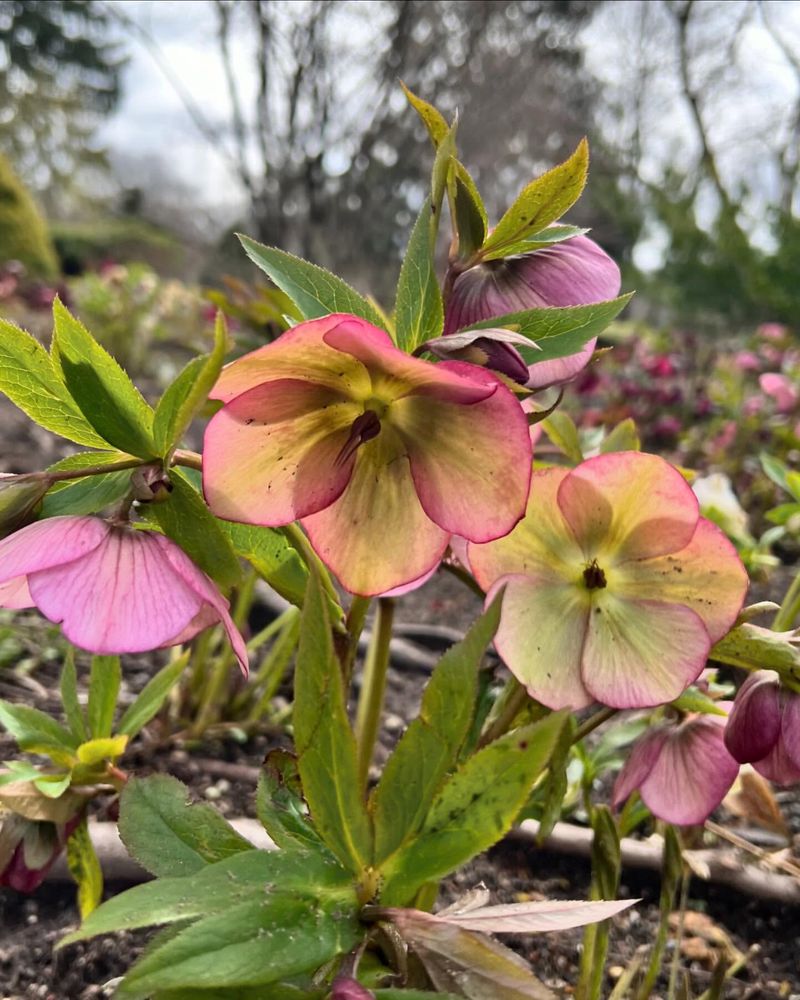In Oregon, where the rain keeps everything growing—including the weeds—finding tough, low-maintenance plants is a total win. I’ve planted a few of these hardy perennials myself, and it’s wild how quickly they filled in and pushed the weeds right out.
No endless weeding, no fuss—just a full, healthy garden doing its thing. These plants are built for Oregon’s climate and make gardening feel a whole lot easier.
Let’s trade the constant pulling for plants that do the hard work for you!
1. Lamb’s Ear
Soft, fuzzy leaves create a dense mat that smothers weeds throughout Oregon gardens. The silvery foliage spreads steadily, filling empty spaces where troublesome invaders might otherwise take hold.
Many Oregon gardeners appreciate how this drought-tolerant perennial thrives in poor soil conditions. Its velvety texture adds unique visual and tactile interest while performing the practical job of natural weed suppression.
2. Creeping Thyme
Walking through an Oregon garden, you’ll fall in love with the aromatic carpet this ground cover creates. Tiny leaves form a tight mat just 2-3 inches tall that weeds simply cannot penetrate.
The plant’s spreading habit works perfectly in Oregon’s varied climate zones. When stepped on, it releases a pleasant fragrance while its purple summer flowers attract beneficial pollinators to your garden.
3. Lady’s Mantle
Water droplets collect like tiny jewels on the scalloped leaves after Oregon’s frequent rains. This clumping perennial creates a dense 12-18 inch mound that effectively blocks weed growth in its territory.
Oregon gardeners value how lady’s mantle tolerates both sun and partial shade. The chartreuse flower clusters appear in early summer, adding weeks of interest while the plant continues its weed-suppressing duties.
4. Ornamental Oregano
Unlike its culinary cousin, this showstopper cascades beautifully over walls and edges throughout Oregon landscapes. The trailing growth habit smothers weeds while creating a stunning visual display of purple-pink flowers.
Many Oregon garden designers choose this drought-tolerant perennial for hot, dry spots. Its aromatic foliage naturally repels many garden pests while the long-lasting blooms attract butterflies from midsummer through fall.
5. Barrenwort
Heart-shaped leaves create a solid carpet under trees where other plants struggle in Oregon’s shady spots. Also called Epimedium, this tough perennial spreads slowly but surely, crowding out woodland weeds.
Many Oregon gardeners with mature trees rely on barrenwort’s ability to compete with tree roots. The delicate-looking spring flowers belie its tough nature – once established, it handles Oregon’s summer dry spells with minimal fuss.
6. Hardy Geranium
Often called cranesbill, these workhorses form dense mounds that leave no room for weeds in Oregon gardens. Their deeply cut leaves create a tight canopy that effectively blocks sunlight from reaching weed seeds below.
Throughout Oregon, gardeners appreciate how these adaptable plants thrive in various conditions. The long-lasting flowers in shades of purple, pink, and blue appear from late spring through fall, attracting pollinators while the foliage continues its weed-suppressing mission.
7. Sedums
Low-growing varieties form tight mats that weeds simply cannot penetrate in sunny Oregon garden spots. Their succulent leaves store water, making them incredibly drought-tolerant once established in our sometimes-dry summers.
Many Oregon rock gardens showcase sedums for their carefree nature and year-round interest. The late-season flowers in shades of pink, red, and yellow attract butterflies while the fleshy foliage remains attractive even in winter.
8. Hostas
Large, broad leaves create dense shade at ground level, preventing weed seeds from germinating in Oregon’s woodland gardens. These shade-lovers come in countless varieties with blue, green, gold, or variegated foliage to suit any design.
Across Oregon’s cooler regions, hostas thrive with minimal care once established. Their architectural presence adds structure to shady spots where many other perennials struggle, effectively creating weed-free zones beneath trees and along north-facing foundations.
9. Lungwort
Spotted leaves create interest even before the early spring flowers appear in Oregon’s shade gardens. This tough perennial, also called Pulmonaria, spreads to form a dense carpet that weeds struggle to penetrate.
Many Oregon gardeners with woodland settings appreciate lungwort’s tolerance of dry shade once established. The pink-to-blue flowers emerge in early spring when the garden needs color most, while the distinctive foliage works year-round to suppress unwanted volunteers.
10. Heuchera
Colorful foliage in shades of purple, caramel, lime, and silver brightens Oregon’s partly shaded garden spots. These native coral bells form dense mounds that effectively block light from reaching weed seeds while adding year-round color.
Many Oregon native plant enthusiasts choose heucheras for their adaptability to our region’s growing conditions. The delicate flower stalks rise above the foliage in summer, attracting hummingbirds while the leaves continue their ground-covering, weed-suppressing work.
11. Ajuga
Also known as bugleweed, this rapid spreader creates a dense carpet of foliage that chokes out weeds in Oregon’s challenging garden spots. The glossy, often purple-tinged leaves form an impenetrable mat just inches tall.
Many Oregon gardeners with problem slopes use ajuga to prevent erosion while suppressing weeds. The striking blue flower spikes in spring attract early pollinators, but it’s the plant’s aggressive spreading habit that makes it so effective at creating weed-free zones.
12. Epimedium
Delicate appearance belies this tough performer that thrives in Oregon’s dry shade conditions. The heart-shaped leaves form a solid cover that persists for years, effectively blocking weed growth under trees and shrubs.
Throughout Oregon’s woodland gardens, epimedium solves the challenge of competing tree roots. The spring flowers dance above the foliage on wiry stems, while the leaves often take on bronzy or reddish tints in fall for extended seasonal interest.
13. Japanese Forest Grass
Graceful arching leaves cascade to form a weed-suppressing fountain in Oregon’s shady garden corners. This ornamental grass creates a distinctive textural presence while effectively preventing weeds from establishing.
Many Oregon shade gardens showcase this grass for its bright chartreuse or variegated foliage. The slow-spreading clumps maintain their beauty through the growing season and often take on golden tones in fall before going dormant for winter.
14. Coreopsis
Sunny yellow blooms appear for months above the dense foliage that effectively blocks weed growth in Oregon’s sunny gardens. These native tickseeds form tight clumps that gradually spread to fill empty spaces.
Across Oregon’s varied climate zones, coreopsis thrives with minimal attention. The finely-cut leaves create a thick mat while the long-lasting flowers attract butterflies and pollinators from early summer until fall frost, providing multiple garden benefits.
15. Hardy Ferns
Graceful fronds unfurl to create a natural woodland canopy that blocks light from reaching weed seeds in Oregon’s shady spots. Varieties like sword fern and deer fern are native to our region and naturally adapted to our conditions.
Many Oregon woodland gardens incorporate these carefree plants for their ability to thrive without fuss. Once established, they spread slowly through underground rhizomes, gradually creating larger weed-suppressing colonies that require almost no maintenance.
16. Bergenia
Large, leathery leaves form a dense evergreen cover that persists through Oregon’s mild winters. Often called pigsqueak for the sound made when rubbing the thick leaves, this tough perennial creates a solid weed barrier.
Many Oregon gardeners appreciate bergenia’s four-season presence in the landscape. The early spring flowers in shades of pink rise above the foliage while the leaves often take on burgundy tones in winter, adding color when the garden needs it most.
17. Yarrow
Feathery foliage forms a dense mat that crowds out weeds in Oregon’s sunniest, driest garden spots. This native perennial thrives in poor soil where many weeds struggle, creating an easy-care solution for problem areas.
Throughout Oregon’s drier regions, yarrow proves its worth during summer drought. The flat-topped flower clusters in white, yellow, or pastel shades attract beneficial insects while the aromatic foliage naturally repels many garden pests.
18. Nepeta
Also called catmint, this aromatic perennial creates a billowing mound that smothers weeds throughout Oregon gardens. The gray-green foliage forms a dense layer while the lavender-blue flower spikes attract pollinators for months.
Many Oregon gardeners use nepeta as a drought-tolerant border plant that discourages weeds. When trimmed after the first flush of bloom, it quickly regrows and flowers again, providing extended color while maintaining its weed-suppressing ground cover.
19. Astilbe
Feathery plumes rise above fern-like foliage that forms a dense, weed-blocking layer in Oregon’s moist, shady areas. These reliable perennials spread gradually to fill empty spaces where weeds might otherwise take hold.
Many Oregon gardeners with part-shade locations rely on astilbe’s problem-solving abilities. The showy flower spikes in shades of pink, red, lavender, and white add vertical interest while the attractive foliage works all season to prevent weed germination.
20. Hellebores
Winter-blooming flowers appear above leathery evergreen leaves that form a year-round weed barrier in Oregon’s woodland gardens. These tough perennials, also called Lenten roses, thrive in dry shade once established.
Across Oregon’s milder climate zones, hellebores provide winter interest when the garden needs it most. The nodding flowers in shades of white, pink, purple, and green often persist for months while the sturdy foliage effectively blocks weed growth all year.

